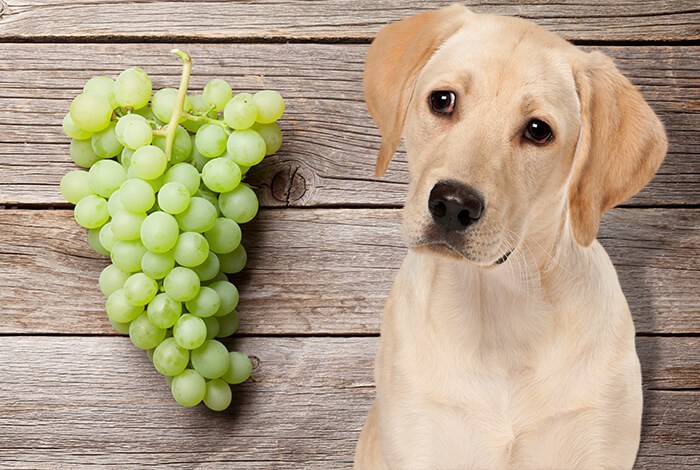The answer is a big no. Grapes should never be given to dogs. Consuming grapes or raisins can result in poisoning, which can cause debilitating side effects such as dehydration and seizures.Read on to find out grape poisoning symptoms and what should be done if your furry companion has ingested grapes.
Why can’t dogs eat grapes?
Grapes are highly toxic for dogs. The exact component that causes toxicity in the fruit remains unknown. Scientists have ruled out pesticides, fungi, and heavy metals. Experts believe that the cause of poisoning is found in the grape’s flesh.
Can my dog eat raisins?
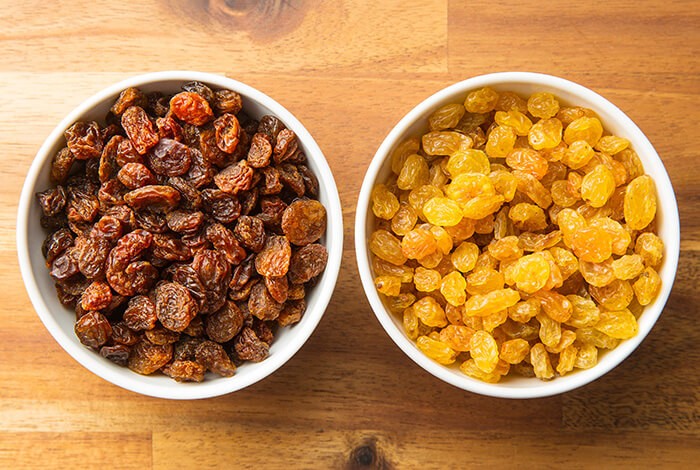 Any forms of the fruit such as raisins ( currants ), grape juice are all toxic to dogs. Some speculate that raisins’ toxicity is more potent than grapes. Make sure to avoid giving any grapes and raisins to your dog.
Any forms of the fruit such as raisins ( currants ), grape juice are all toxic to dogs. Some speculate that raisins’ toxicity is more potent than grapes. Make sure to avoid giving any grapes and raisins to your dog.
Do all dogs get sick from grapes?
All dogs are at risk of suffering from grape toxicity. It is observed that some dogs can consume the fruit without becoming sick. However, this does not mean they are safe from its toxins.
Some experts assume that it may be a dose-dependent issue. This means that small dogs may immediately show signs of grape poisoning by ingesting just a small amount of grapes. These symptoms do not easily emerge in larger dogs if they eat only a few.
How many grapes cause toxicity in dogs?
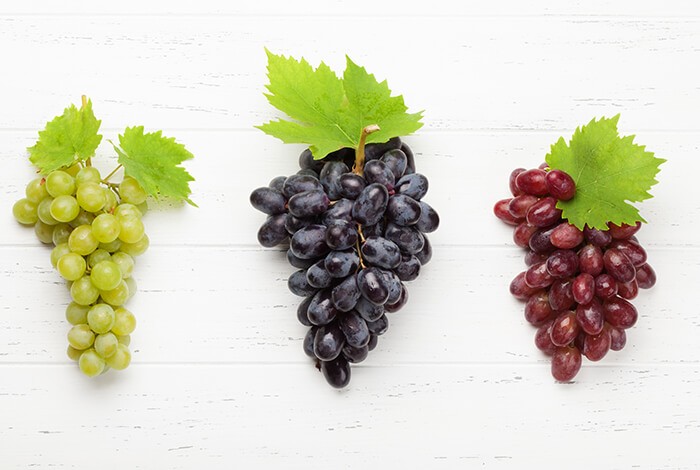 It is unclear how much grapes can lead to toxicity. There are also no known predisposing factors that prove why some dogs are more susceptible to grape poisoning.
It is unclear how much grapes can lead to toxicity. There are also no known predisposing factors that prove why some dogs are more susceptible to grape poisoning.
However, a general guideline exists which points out when dangerous doses may begin.
For grapes:
- 1 or 2 grapes for a 10-pound dog
- 3 or 4 grapes for a 20-pound or heavier dog
For raisins:
- 0.7 ounces for a 10-pound dog
- 1.4 ounces for a 20-pound dog
- 2.1 ounces for a 30-pound dog
- 2.8 ounces for a 40-pound or heavier dog
Although this guideline exists, pet owners must be aware that feeding grapes to dogs is highly discouraged. Do not take the risk, as the consequences can be very distressing.
What are the symptoms of grape toxicity in dogs?
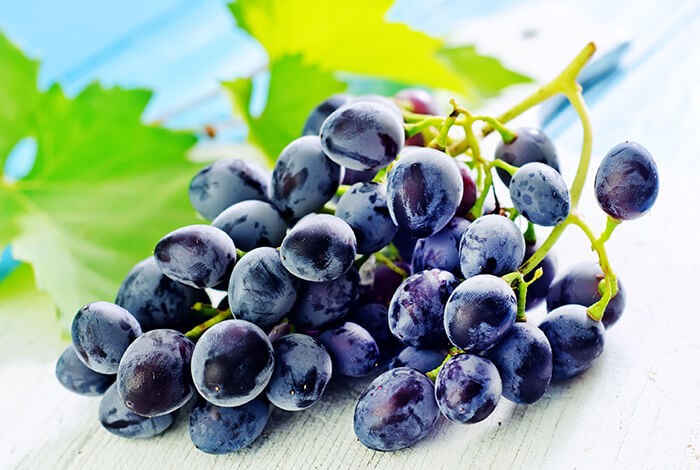 Grape and raisin toxicity can have ill effects in dogs. To keep your pup safe, here are the most common symptoms that you need to be aware of:
Grape and raisin toxicity can have ill effects in dogs. To keep your pup safe, here are the most common symptoms that you need to be aware of:
- Abdominal pain
- Tenderness in the abdomen
- Lack of appetite
- Vomiting
- Dehydration
- Increase of thirst and urine production
- Decrease or stoppage of urine production
- Diarrhea
- Lack of energy
- Tremors
- Seizures
- Sudden kidney failure
How long after eating grapes will a dog get sick?
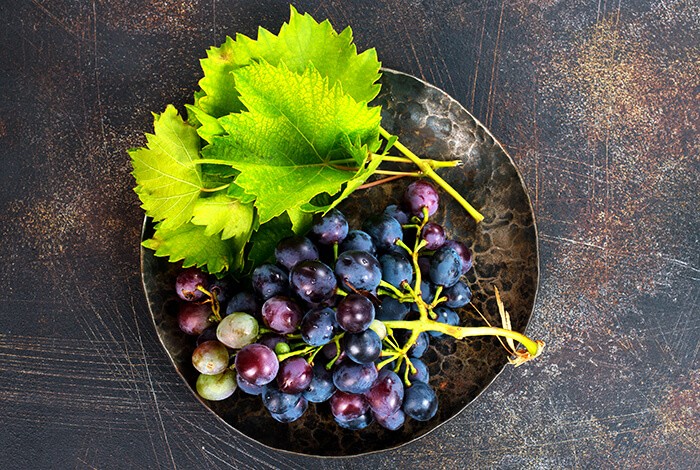 The first sign of grape poisoning is vomiting. Your dog may start to vomit within 24 hours after ingestion. Within the next 12 to 24 hours, lethargy, diarrhea, and appetite loss may begin to manifest.
The first sign of grape poisoning is vomiting. Your dog may start to vomit within 24 hours after ingestion. Within the next 12 to 24 hours, lethargy, diarrhea, and appetite loss may begin to manifest.
Severe symptoms usually don’t show after 24 to 48 hours of ingestion. These commonly occur after acute kidney failure. It is characterized by loss of appetite, vomiting, nausea, diarrhea, uremic (urine-like smell) breath, excessive urination, and thirst.
If left untreated, your dog’s condition may turn fatal. The toxicity may progress, which can cause kidney damage. Blood pressure will rise, and your dog can lapse into a coma.
What If Your Dog Eats a Grape or Raisin?
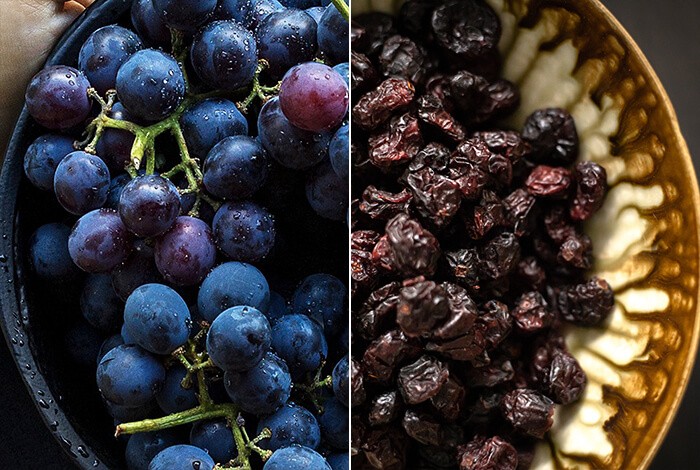 If your dog has eaten grapes or raisins, call the vet immediately. Inducing vomiting may be recommended for initial care. This is to remove the fruit from your pooch’s system.
If your dog has eaten grapes or raisins, call the vet immediately. Inducing vomiting may be recommended for initial care. This is to remove the fruit from your pooch’s system.
However, if your dog has already vomited, do not force him to vomit again. If your dog loses consciousness, has difficulty breathing, or shows signs of shock, do not induce vomiting.
Grape toxicity shares similar symptoms with other illnesses. If you suspect that your dog ate a grape or raisin, bring him to the vet so that a proper diagnosis could be made.
It will rule out other possible diseases. Moreover, it helps the vet choose the most appropriate treatment for your dog.
What to do if my dog has grape toxicity?
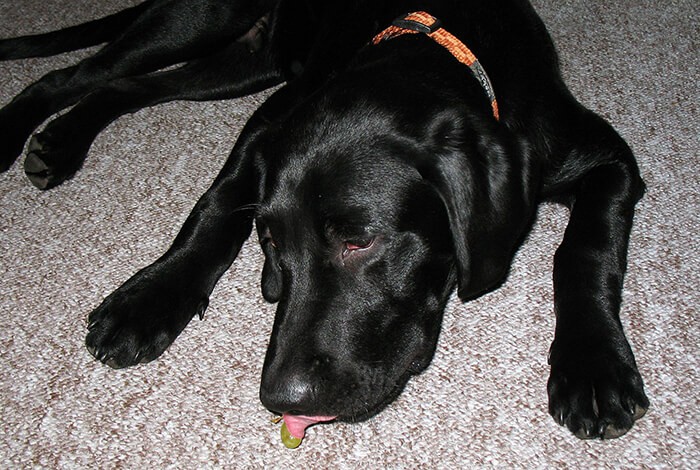 Take your dog to the vet clinic immediately to get your dog diagnosed. Routine laboratory tests will be performed to determine if his symptoms are caused by grape poisoning or something else. Your dog may need to take urinalysis, biochemistry profile, and complete blood count (CBC).
Take your dog to the vet clinic immediately to get your dog diagnosed. Routine laboratory tests will be performed to determine if his symptoms are caused by grape poisoning or something else. Your dog may need to take urinalysis, biochemistry profile, and complete blood count (CBC).
If proven that grape is the cause, the vet will proceed to administer treatment. This involves inducing vomiting and the use of activated charcoal, which coats the stomach and lessens toxin absorption.
They may also perform gastric lavage or stomach pumping. It is a process of decontamination by emptying your dog’s stomach.
After that, the vet will proceed to the most important part of the treatment: intravenous fluid therapy. It flushes the toxins out of your dog’s body.
This also supports his kidneys should acute kidney failure occur. Your dog’s blood chemistry and renal enzyme values will be monitored for 72 hours.
How to prevent grape toxicity in dogs?
 Grape toxicity in dogs can be distressing for dog owners. Protect your pooch from accidental ingestion of this fruit by following these useful tips:
Grape toxicity in dogs can be distressing for dog owners. Protect your pooch from accidental ingestion of this fruit by following these useful tips:
- Store grapes and raisins in containers that are out of your dog’s reach. This will prevent him from getting his paws on them.
- Inform your children. Make sure they understand that giving grapes or raisins can harm your pooch. Teach them not to leave grapes on the floor or any area that your dog can reach.
- Never give in to his puppy eyes. If you are eating grapes or raisins, do not share them with him, although it can be very tempting.
- Doing this will save you and your pooch from a lot of trouble in the future.
- Avoid giving human food. These may contain grapes or raisins, and your dog may unknowingly ingest them.
- Consider providing your dog with alternative fruits. Pineapples, watermelon, strawberries, blueberries, apples, and bananas are some of the safe and healthy options. Before introducing new fruit into your dog’s diet, consult the vet.

